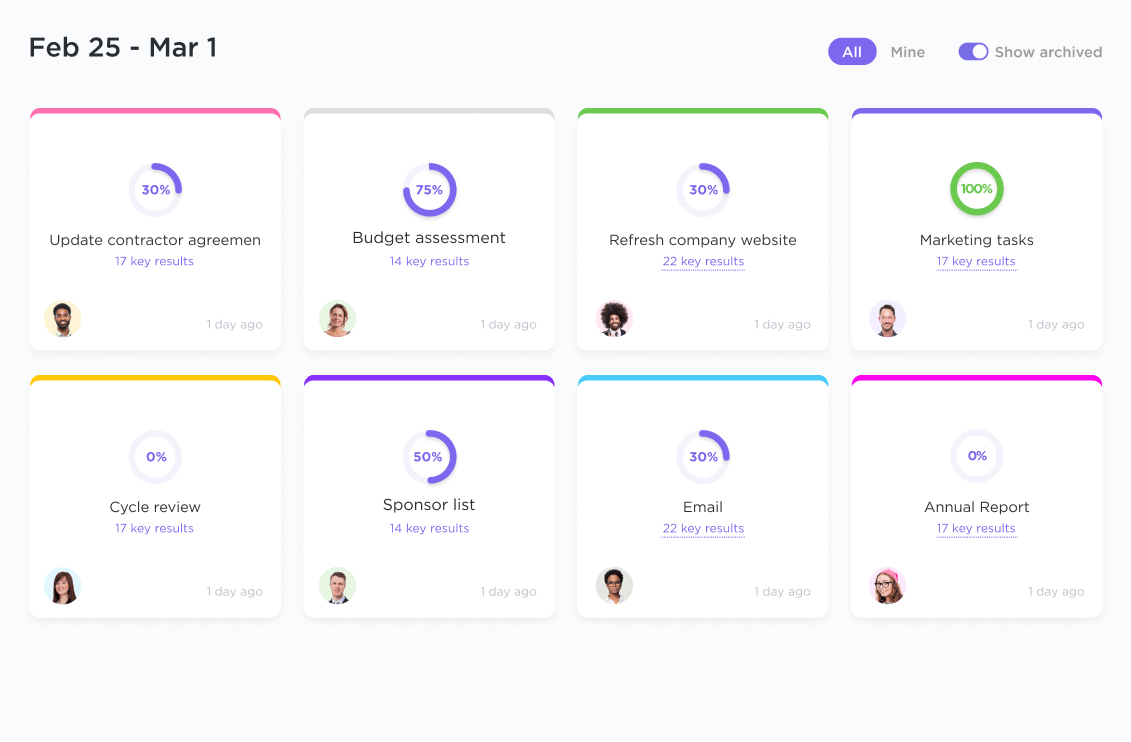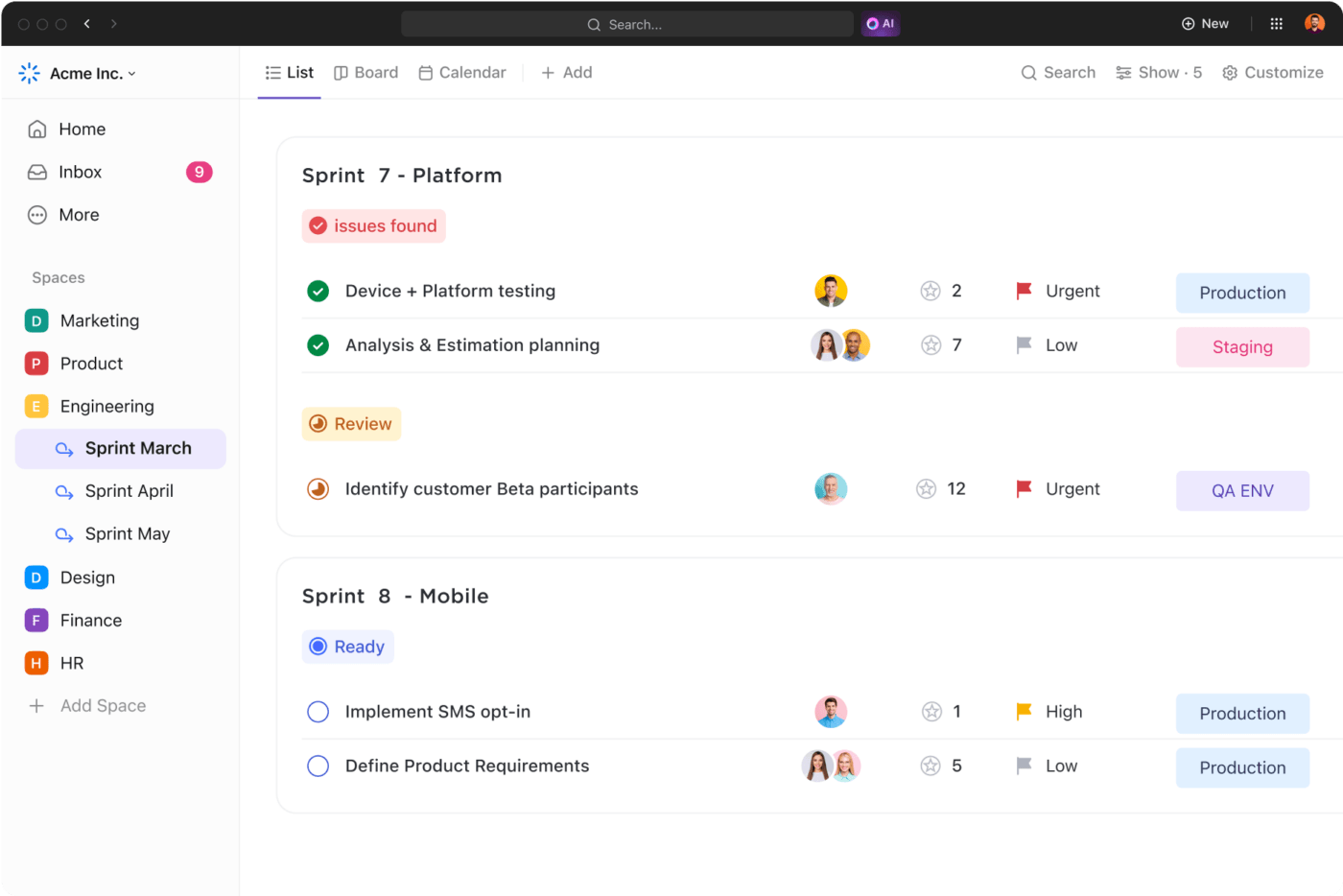A Comprehensive Guide to Become a Successful Product Manager

Sorry, there were no results found for “”
Sorry, there were no results found for “”
Sorry, there were no results found for “”
The demand for skilled product managers has never been higher. Companies across all industries are seeking talented professionals to optimize their product strategies and generate higher ROI (return on investment).
But what does it take to become a product manager?
A product manager must have a knack for modern technology and a keen eye for market trends. Effective communication and collaboration abilities, time management skills, leadership qualities, analytical prowess, and strategic thinking are crucial for this role.
But how do you acquire these skills and become a product manager?
We’ll uncover that in this blog—from understanding a product manager’s core skills to exploring the benefits, challenges, and everything in between.
A product manager oversees the product’s journey from idea to launch and beyond, striving to bring a high-quality product to market that meets customer needs. This involves managing the development process and ensuring the product succeeds.
In this role, you act as the bridge between different departments, including engineering, marketing, sales, and customer support. The main tasks involve:
Product managers prioritize improving features, build timelines, and work closely with stakeholders to deliver a product that satisfies users and drives business growth.
As a product manager, you must closely monitor the latest business and consumer trends that impact your product or company. This will help you spot potential growth opportunities.
Depending on the organization’s size, you may report to the head of product or even the chief executive officer.
Your main focus is on ensuring the effectiveness of the product, service, or product line, which plays a crucial role in the overall success of the company or brand.
Here are some of the essential and everyday tasks and responsibilities of a product manager:
Product managers and project managers each hold distinct roles within an organization despite being involved in managing product initiatives.
Product managers are concerned with a product’s entire lifecycle, from its inception to its ongoing development and market success post-launch.
For instance, a product manager at a tech company may work on developing a new mobile app by defining features, gathering user feedback, and coordinating with developers and designers.
Project managers oversee specific projects within set timeframes, assigning and scheduling tasks and managing budgets, timelines, and resources to ensure projects accomplish their goals efficiently.
For example, a project manager at a marketing company may manage multiple facets of advertising campaigning efforts, ensuring that deadlines are met and resources are allocated effectively.
Confusing product managers with project managers is common, but this is incorrect. While both roles involve management and leadership, they operate in separate domains.
It is essential to recognize the difference between product management and project management before you pursue the similar-sounding role of product manager.
As a product manager, you need diverse hard and soft skills to drive product growth and motivate your team to ensure that innovation is always present. The product management skills required can vary from organization to organization, depending on their specific needs and expectations for product managers.
But here’s a list of relevant skills every product manager must develop.
Analytical skills are crucial for effective product management, enabling you to understand industry trends and make informed decisions. Such skills also help you analyze customer feedback and data and discover the needs and pain points.
You may use data analysis tools and analytical abilities to optimize your work. It will allow you to easily extract meaningful data and turn complex information into actionable insights about user behavior and the efficiency of product features. This route ensures that your decisions are based on stats and facts, not assumptions. Reliance on data helps you build a product that matches your target audience’s expectations.
You can leverage product management tools such as the ClickUp Teams Product Tool to excel in your job. ClickUp is a great all-in-one, feature-rich software solution not just for aspiring product managers but also for seasoned professionals.

This product management software offers ClickUp Dashboards, which allows you to create customizable dashboards and reports that you may use to efficiently store, organize, track, and analyze relevant product data, such as customer feedback and product usage information.
As a product manager, it’s vital to think strategically. This means considering everything from a bird’s-eye perspective. Strategic thinking can help you prioritize tasks, spot opportunities, address challenges, and make informed choices throughout the product development process.
You can leverage ClickUp’s Product Roadmap Template to help you develop and implement strategic plans effectively. With ClickUp’s product roadmap view, you can visualize your product’s long-term strategy and align your team’s efforts toward common goals. This framework can also align your stakeholders with the goals and objectives. This template has custom statuses, fields, and views, allowing you to visualize and manage your product roadmap how you like.
Check out this resource on 20 Free Product Management Templates to increase efficiency!
Use ClickUp Goals allows you to set objectives and key results (OKRs) to measure progress and ensure alignment with your strategic goals.

You may also employ techniques like SWOT analysis, which assesses your product’s strengths, weaknesses, opportunities, and threats. This will help you develop a robust product strategy and make decisions that support organizational goals.
Problem-solving is a critical part of product management. Whether resolving customer crises, navigating product development issues, or adapting to market shifts, you must tackle such challenges head-on.
This involves thinking creatively to devise workable solutions, adjusting strategies based on feedback, and making decisions with whatever data is available to you.
Here, ClickUp’s Sprint Management feature can efficiently help identify and resolve issues that hinder progress and ensure that your product development workflows stay on track.

Additionally, ClickUp offers integrations with tools like Slack and Microsoft Teams. You can integrate your pre-existing tools on ClickUp and enjoy the benefits.
A product manager must choose which projects or tasks to work on first, considering which ones will have the biggest impact on improving the product.
It revolves around skillfully organizing and directing resources, such as budget, time, and workforce, to meet product deadlines efficiently.
Moreover, you must communicate with clients and stakeholders, address their needs, and prioritize agreed-upon expectations.
With ClickUp Tasks, you can create tasks, assign them to team members, set due dates, and establish priorities. This ensures everyone knows what to work on and when to complete it.

ClickUp’s customizable task statuses and workflows let you tailor your project management processes to fit your team’s needs, such as issue tracking or feature testing and launching. Whether you follow Scrum, Kanban, or Agile methodology, ClickUp adapts to your workflow.
With ClickUp Time Tracking, you can monitor how much time is spent on various tasks and projects, identify areas where time is spent inefficiently, and make necessary adjustments.
Leadership skills for a product manager means much more than just managing or leading a team. It involves bringing together various teams and guiding and motivating them to stay synchronized with the product’s vision to achieve organizational goals.
You must communicate the product’s vision and the company’s business strategy through every step of the development process. Your job is also to create a collaborative work environment where teams can discuss their creative plans.
Using ClickUp Whiteboards feature, you can create a space for your team to brainstorm ideas, plan software development workflows, and visualize concepts collaboratively.

You can use ClickUp Docs to build more comprehensive documentation around product development, such as outlining the product vision, strategy, and goals. Embed rich media, link related tasks, and tag team members to ensure everyone can access the latest information.

As a product manager, one of your core responsibilities involves leading cross-functional teams, and bringing together individuals from various departments and potentially different locations.
In such scenarios, ClickUp can serve as a centralized platform for communication and collaboration. Features like @mention within tasks and Chat view in ClickUp can help you build the transparency you need to collaborate seamlessly among departments, company leaders, and external partners.
Pro Tip: Use ClickUp Chat to communicate freely with the team and assign tasks directly from your message threads!

You may also have to reprioritize project tasks daily, provide direction during critical company meetings, and resolve internal conflicts between team members.
You must have soft skills such as empathy, active listening, persuasion, negotiation, and conflict resolution to accomplish this effectively. These interpersonal skills are necessary as your role involves constant interaction and teamwork with others.
Your role is about encouraging teamwork and support, building bridges, and ensuring everyone is on the same page, and ClickUp helps you do that.
A former front-line product manager and a manager of product managers—who has worked across Stripe, Google, Twitter, and Yahoo—here’s what Shreyas Doshi says about becoming a product manager.
Be clear on what you want from your next job before you’ve left your current job. I’m a firm believer that as product managers, we should think of our own career as a product that we are managing. We should apply the same level of analytical rigor to decisions about our careers and these kinds of changes from one company to another.
You need both hard and soft skills to become a good product manager. Let’s explore the step-by-step process of how to become a product manager:
If you aim to get a chance in the product management field, the first step is to clearly understand the profession. You can start by reading up on the topic via blogs, podcasts, and other literature on product management.
It would also help to look at real life examples. Like how Stewart Butterfield, the former CEO of Slack, launched his career as a product manager at Yahoo despite having a masters in Philosophy.
This will better help you understand the many nuances of product management and even aid you in determining if a career in product management is the right fit for you.
Begin by assessing your current skills and the essential skills of a product manager outlined earlier in this guide. Identify the skills you already have and note any gaps—the areas where you need to improve.
If you’re currently employed in an organization, look for opportunities to develop some of the skills within your current role. This allows you to hone transferable skills like communication and problem-solving, which can be practiced in various work contexts.
The most effective way for aspiring product managers to enter the field is through formal certification.
However, not all product management courses are created equal. When selecting a product management certification program, ensure it covers everything you need to succeed. Look for programs that offer practical, real-world skills and experiences that employers value.
Aside from developing essential product management skills, showcasing them to prospective employers or organizations where you’d apply is crucial. But how? You can accomplish this by creating your product management portfolio—a website highlighting projects where you’ve assumed the role of a product manager or situations where you applied a product manager mindset.
Your portfolio is more than just a showcase of your work; it’s also a platform to introduce yourself, share your previous experiences, and articulate why you’re a standout product manager. To create your portfolio, transform your product management projects into detailed case studies of how you handled them from start to finish and feature them on your website.
Networking is great for aspiring product managers as it opens avenues for fresh opportunities, mentorship, valuable advice, and industry insights. To understand how to become a product manager, it’s crucial to connect with professionals already established in the field and engage with them.
While networking may seem daunting, there are numerous ways to begin, and not all involve crowded gatherings or uncomfortable conversations. If you have colleagues in product management, consider reaching out to them for practical insights and advice.
Additionally, consider joining online communities and forums or participating in local or virtual meet-ups and events relevant to the product management industry.
Now that you’ve gained essential skills, obtained certification, and built a strong portfolio and network, it’s time to take the final step: searching for and securing your first product management job.
To increase your chances, tailor your resume to highlight relevant skills and show how your past experiences align with the requirements of a product management role, especially if you’re switching fields entirely.
Once your resume is ready, start applying for product management positions. While searching for work and applying to various companies, keeping track of the details can soon become messy.
You can use the ClickUp Job Search Template to stay organized throughout your job-hunting journey. This robust template can help you track job applications, job openings, company ratings, employee benefits, interview resources and guides, and more. You can customize the statuses like ‘Submitted’ or ‘Interview Scheduled’ for your applications using the template.
A software engineer turned product expert, Lenny Rachitsky has been covering the topic of product management extensively in Lenny’s Newsletter for his 60,000 plus subscribers. Here are seven tried-and-tested recommendations from Lenny on surviving your first role in product management.
Entering the product management field can present various challenges, but you can overcome them with determination and a strategic approach. Here’s how you can address the roadblocks:
Building a diverse skill set is essential to help you manage your job efficiently. Here are some essential skills to consider:
Becoming a product manager is no cakewalk; it can be quite challenging. However, with the right strategies, new or aspiring product managers can overcome common concerns and roadblocks. Let’s have a look.
Solution: Highlight transferable skills and relevant experiences from previous roles that showcase your potential to excel in product management
Solution: Build relationships with professionals in the industry by attending networking events and joining relevant online communities. Seek mentorship from experienced and successful product managers whose insights and guidance can provide immense support as you switch career paths
Solution: Be persistent in your job search but remain open to alternative options or entry-level roles. They can provide valuable experience and help you build connections. You must remember that the journey to becoming a product manager may not always be straightforward
Solution: Ensure you stay updated on industry trends and best practices through online courses and workshops. This will showcase your commitment to growth and development in the field during interviews
Being a product manager offers many pros and cons, as does any job role. Here are some to take into account:
Product managers enjoy competitive salaries due to their critical role in a company’s success. The salaries, of course, can vary based on location, experience, and industry. Regardless, the compensation is mostly attractive and provides financial stability.
This role offers strong job security with the increasing need for skilled product managers. Of course, this depends on the company context, the market, and other macro conditions. Companies recognize the value of strategic product management in achieving business goals. This leads to a steady demand for talented individuals in this field.
The skills you develop, such as strategic thinking, leadership, analysis, and management in a product management role, are in high demand across various sectors. Being a product manager opens up numerous work opportunities for career advancement.
As a product manager, you are responsible for a product’s success or failure. This responsibility can lead to significant stress and pressure, especially when dealing with tight deadlines and high expectations.
To manage this pressure, prioritize tasks effectively and delegate when possible. Use tools like ClickUp to organize your workload, set clear goals, and track progress. Additionally, practice stress management techniques such as mindfulness and regular exercise to maintain your well-being.
Collaborating with cross-functional teams can be challenging due to differing perspectives, priorities, and communication styles.
Use ClickUp as a medium for collaboration and communication to keep everyone aligned with common goals. Conduct regular team meetings, ensure clear documentation and facilitate transparent feedback.
Product managers need to maintain a balance between long-term product vision and immediate, short-term goals. This can be difficult when urgent issues arise that demand quick attention.
Develop a clear product roadmap and regularly review it to ensure alignment with both short-term tasks and long-term objectives. Here, ClickUp can help you visualize the product lifecycle, set long-term and short-term priorities, and track progress to ensure immediate tasks don’t derail your overall strategy.
Check this guide on Product management strategies to maximize product success!
Our detailed guide to becoming a product manager covers everything one needs to know—from acquiring essential skills to overcoming common challenges. Now you can choose if it’s the right path for you.
As you’ve seen above, a product manager’s work primarily revolves around clear communication, transparent documentation, and regular check-ins to ensure you’re on the right course. While part of being successful in this role depends on your skills, the other half depends on having the right tools and work setup to help you accomplish your immediate and long-term goals.
ClickUp offers an all-in-one platform to help you excel as a product manager. It can manage your tasks, create roadmaps to automate workflows, track progress, generate insightful reports, and align your team with your product vision.
Ready to kickstart your product management journey? Sign up for a free ClickUp account and build your product management tech stack today.
© 2025 ClickUp